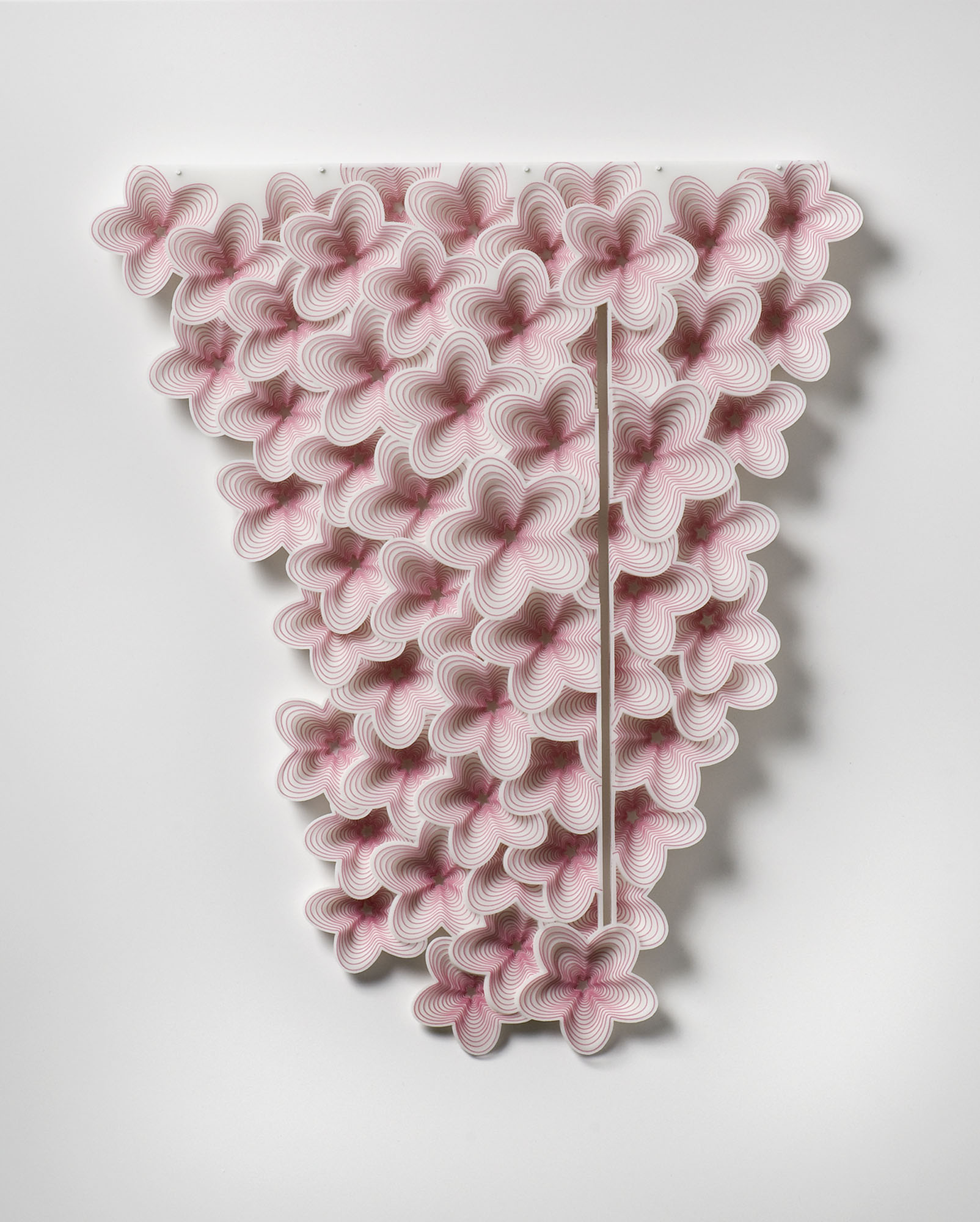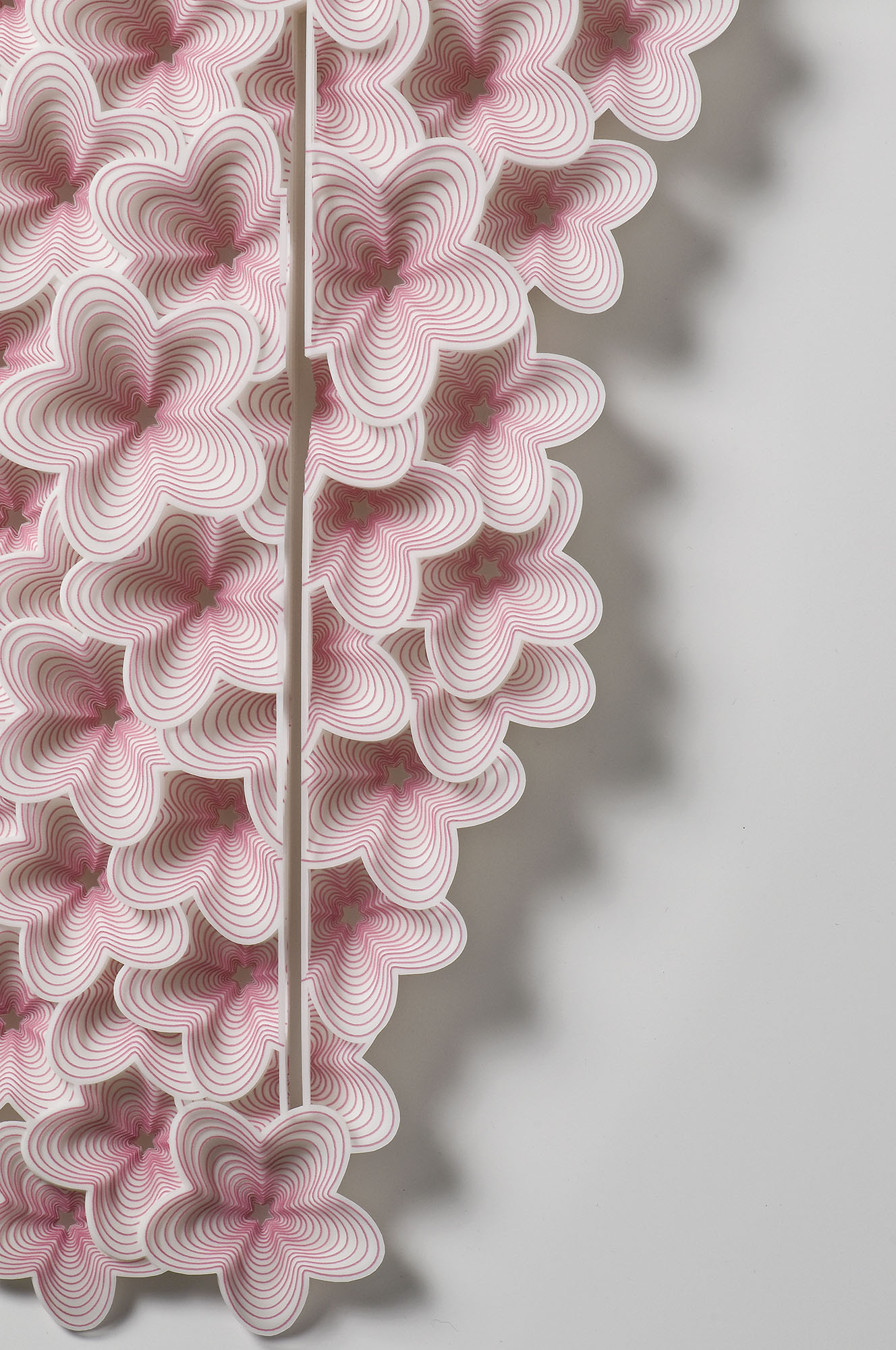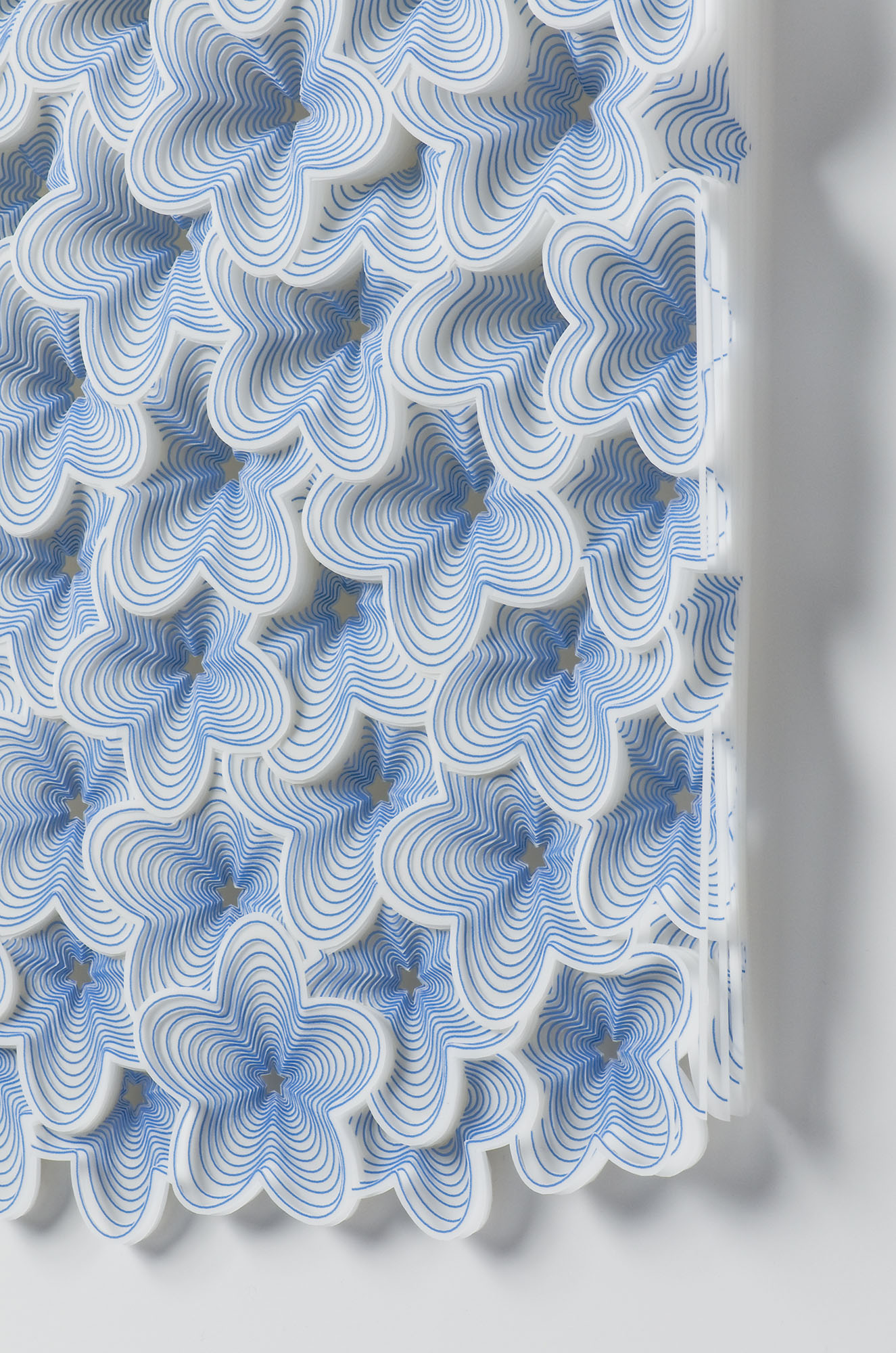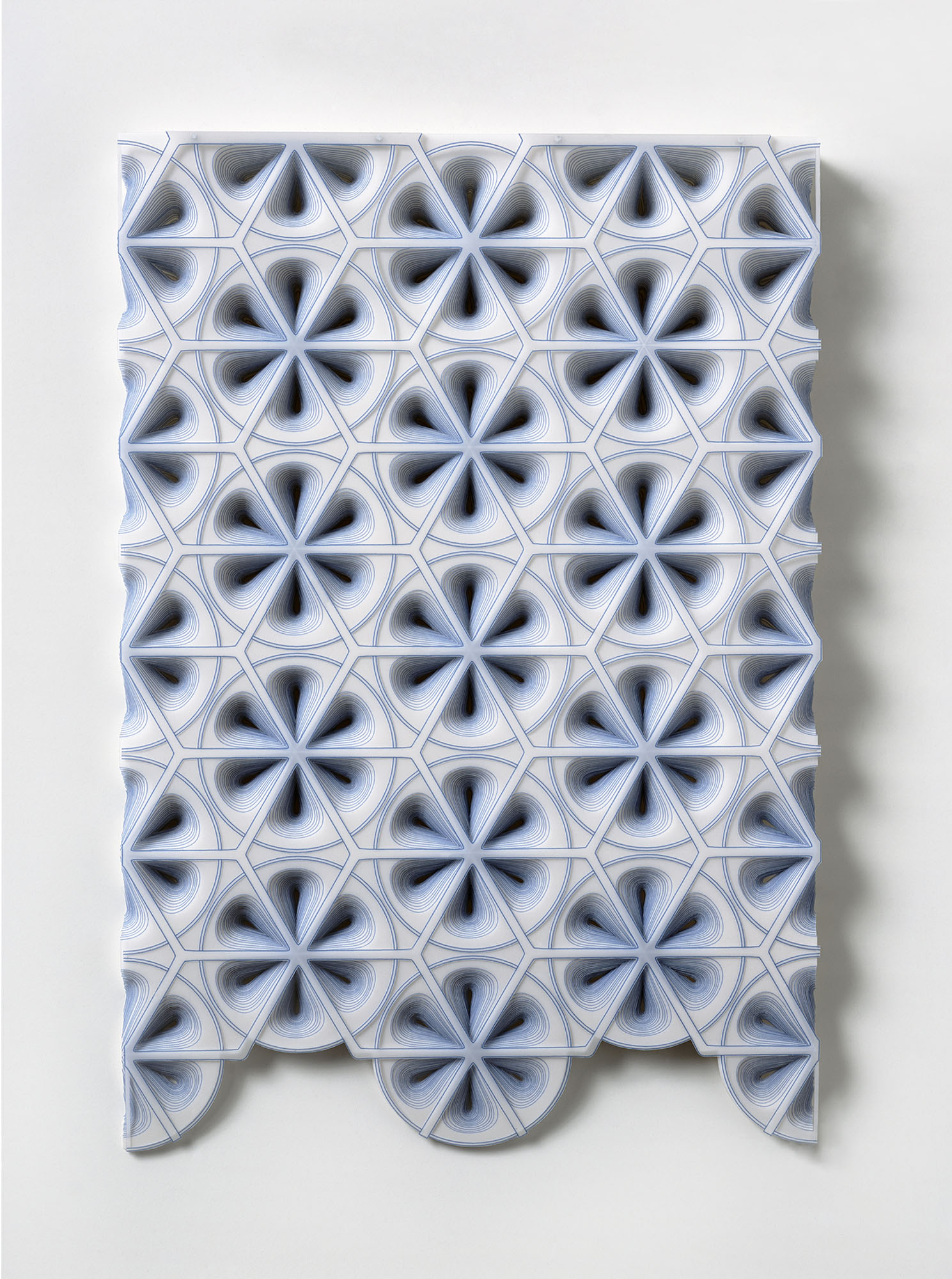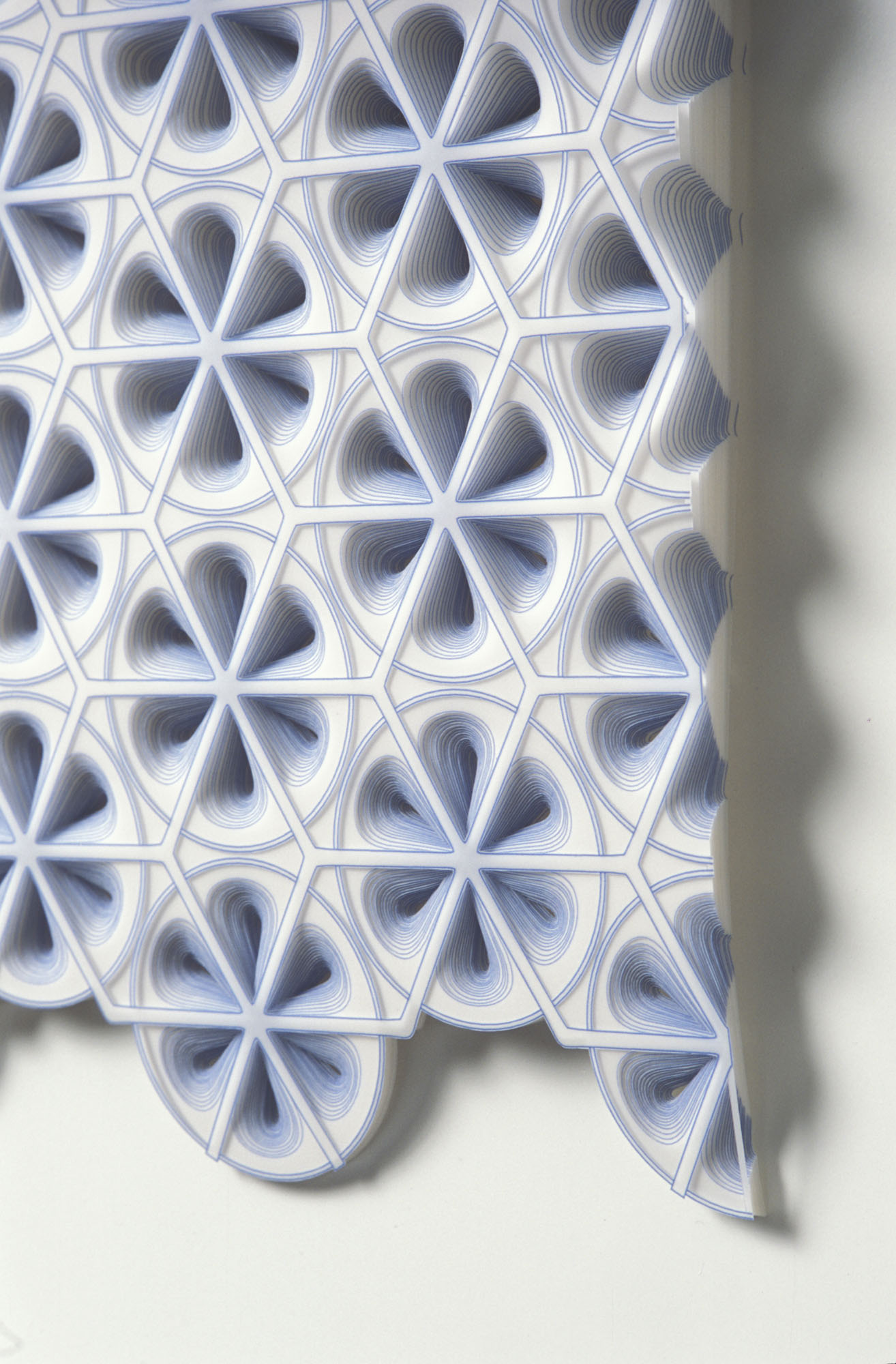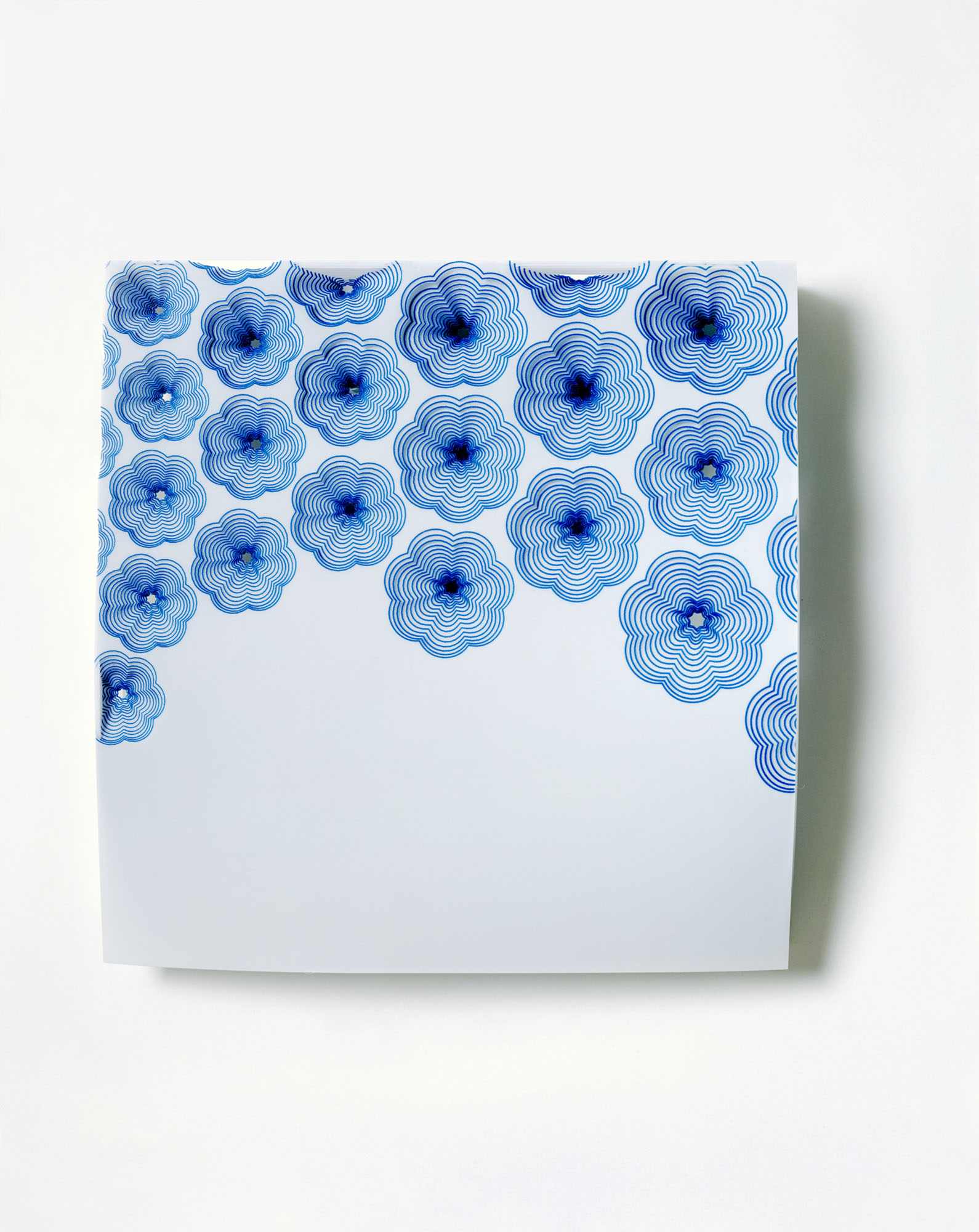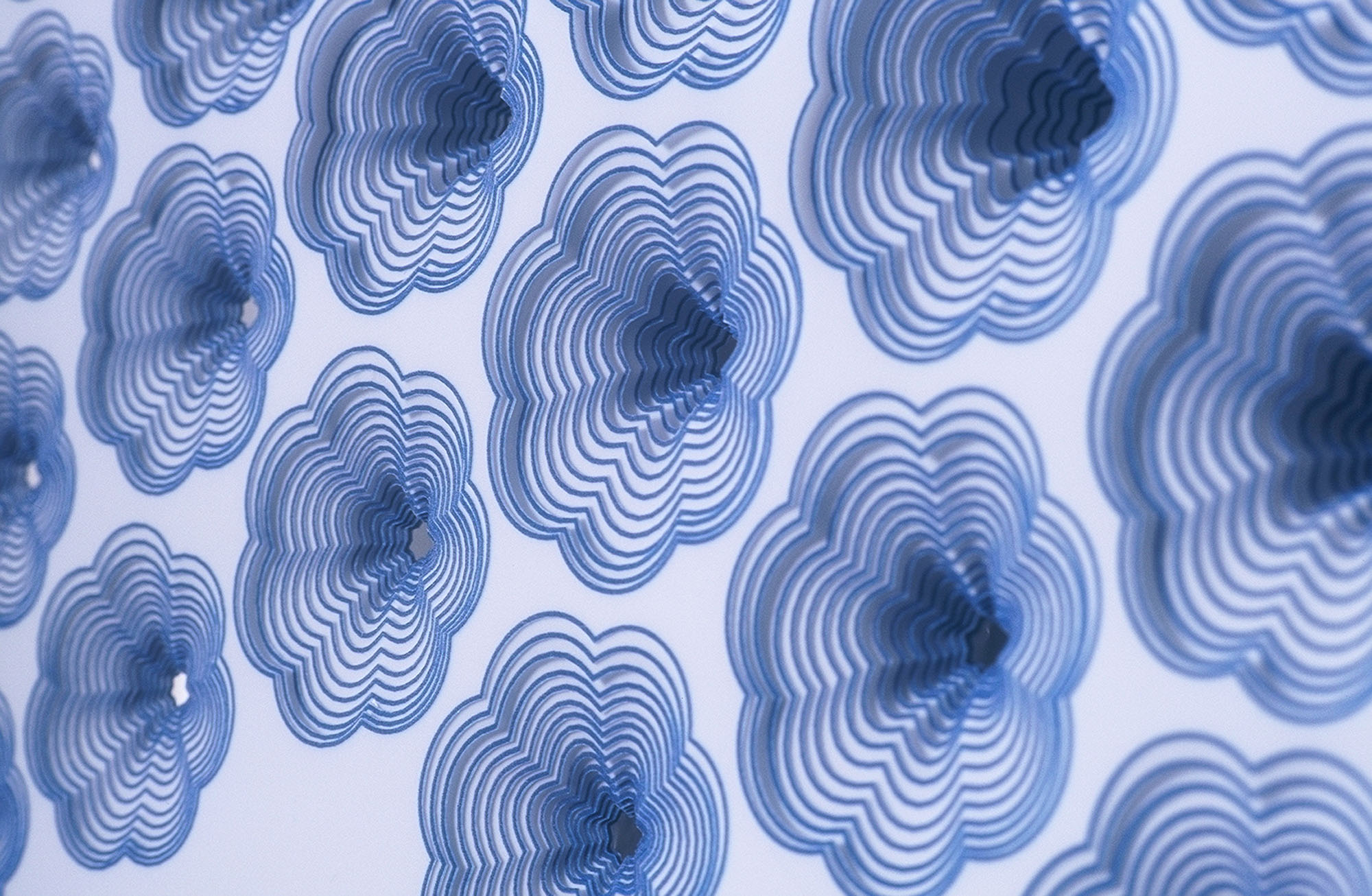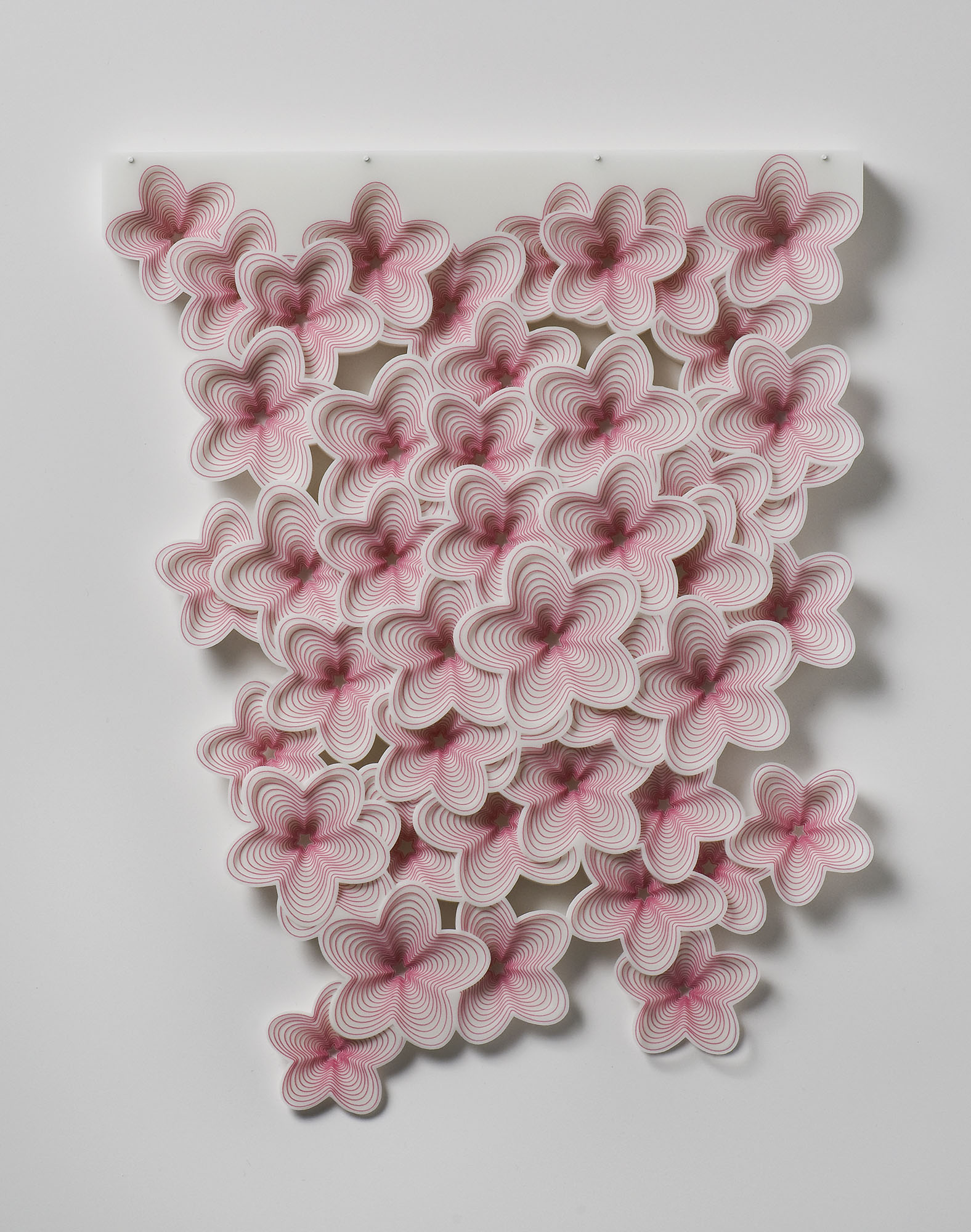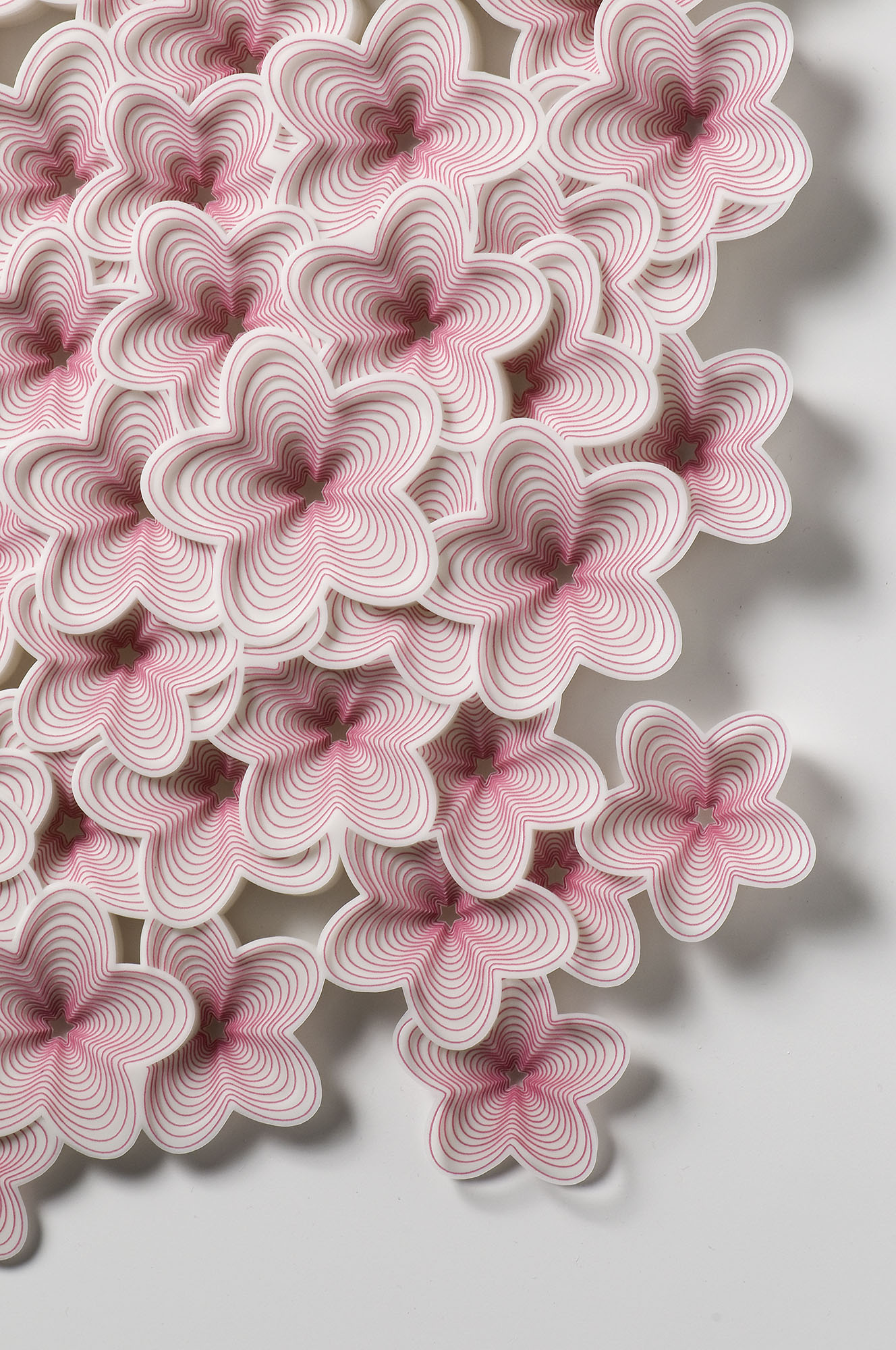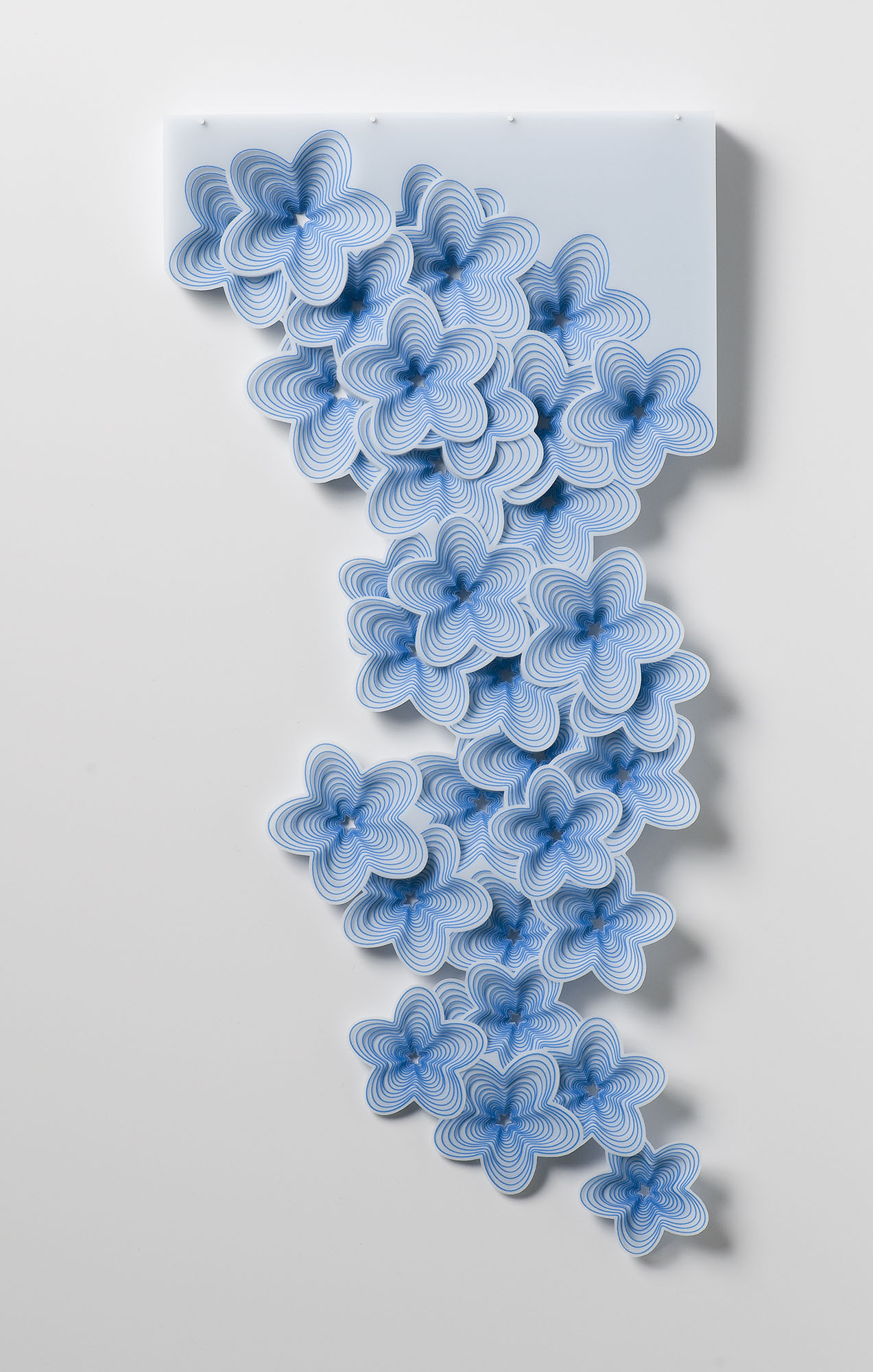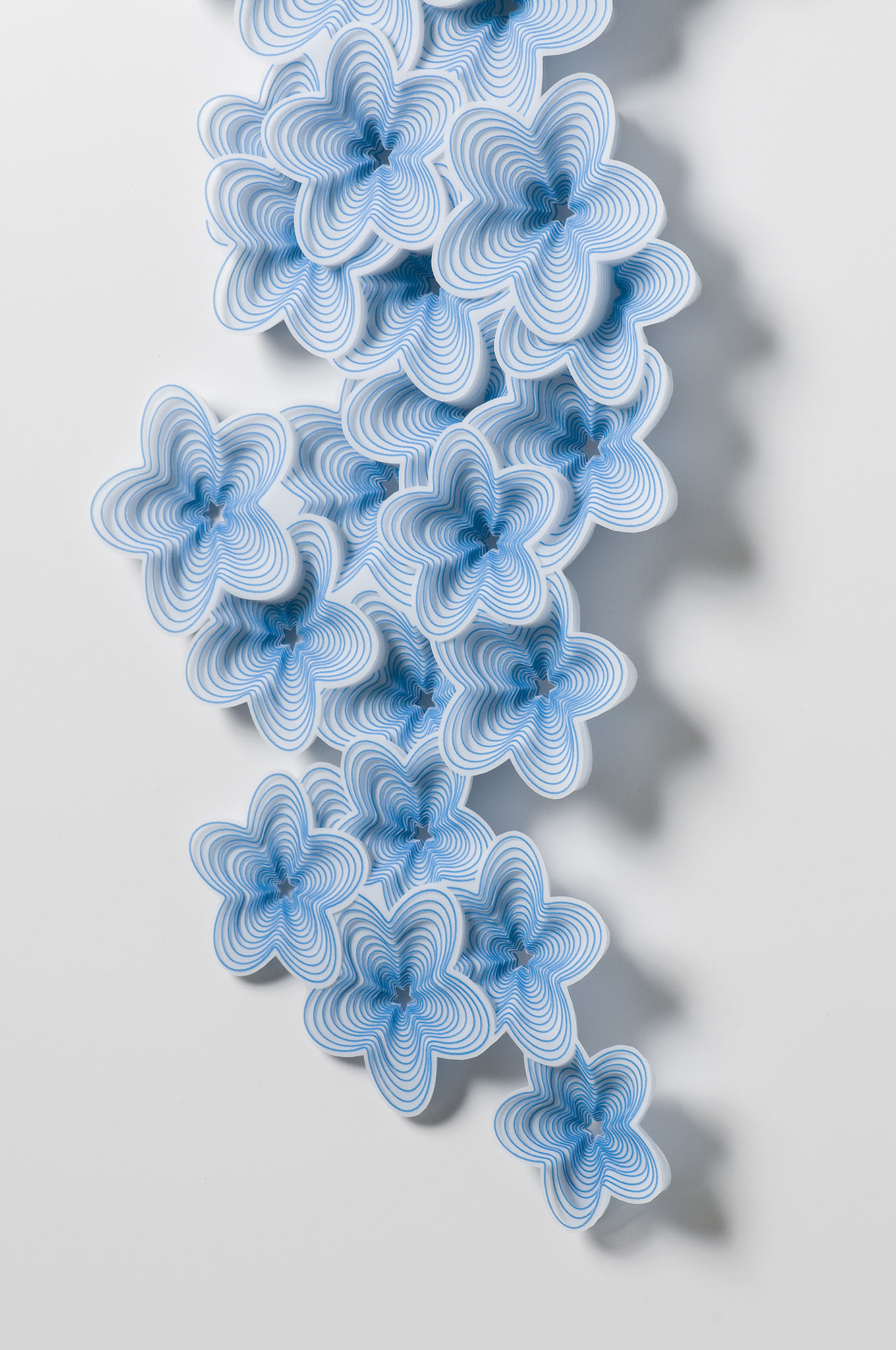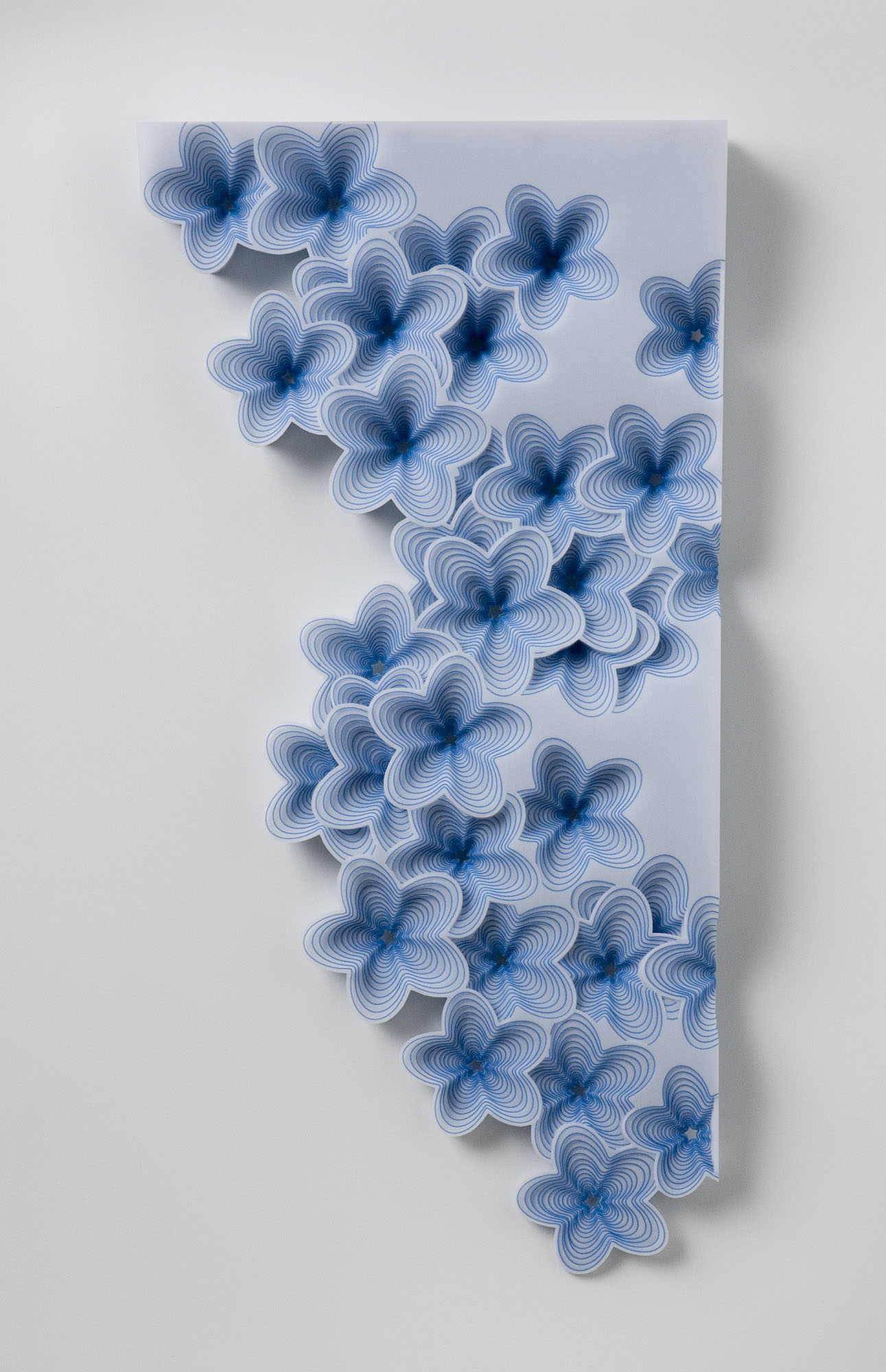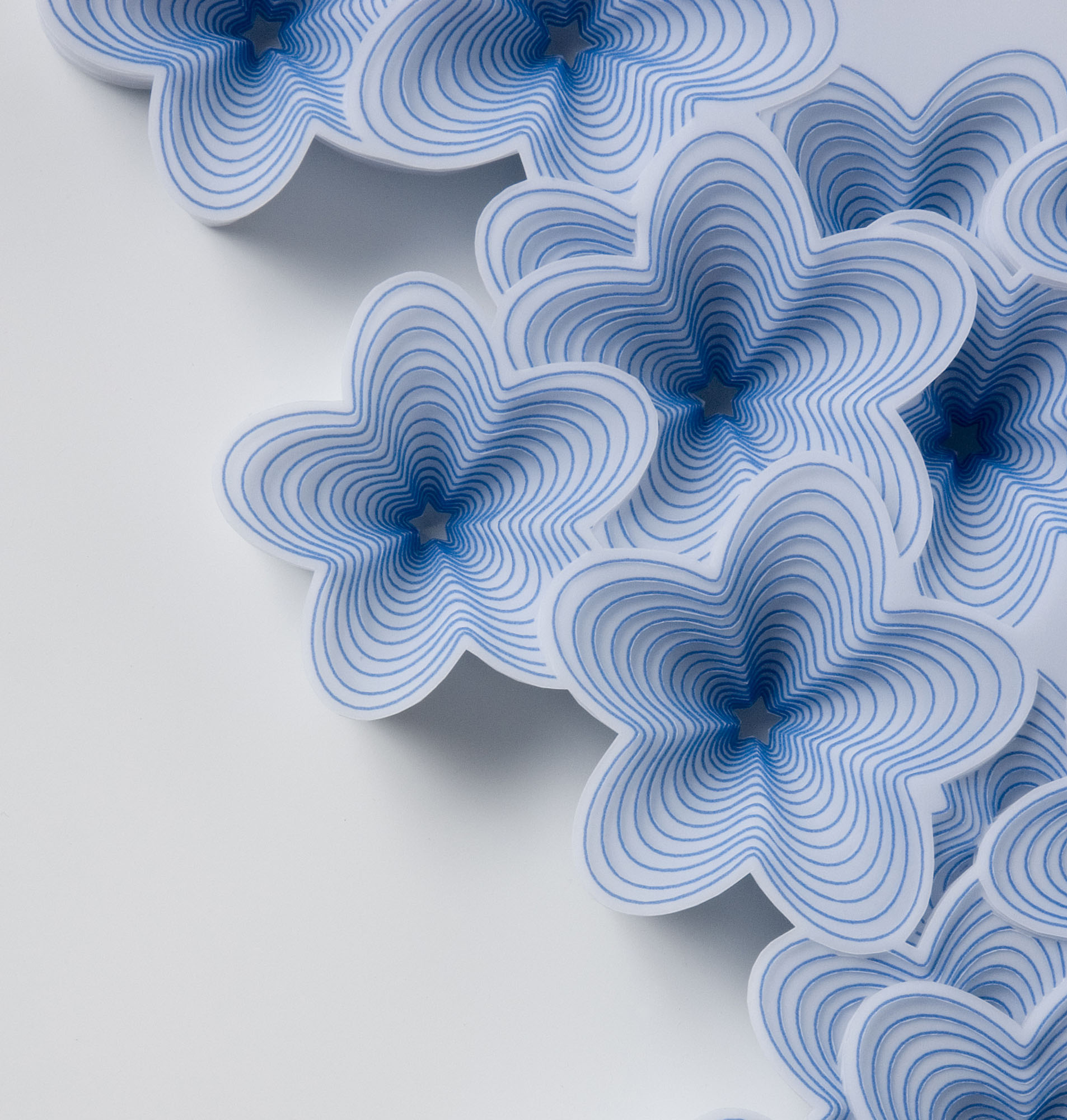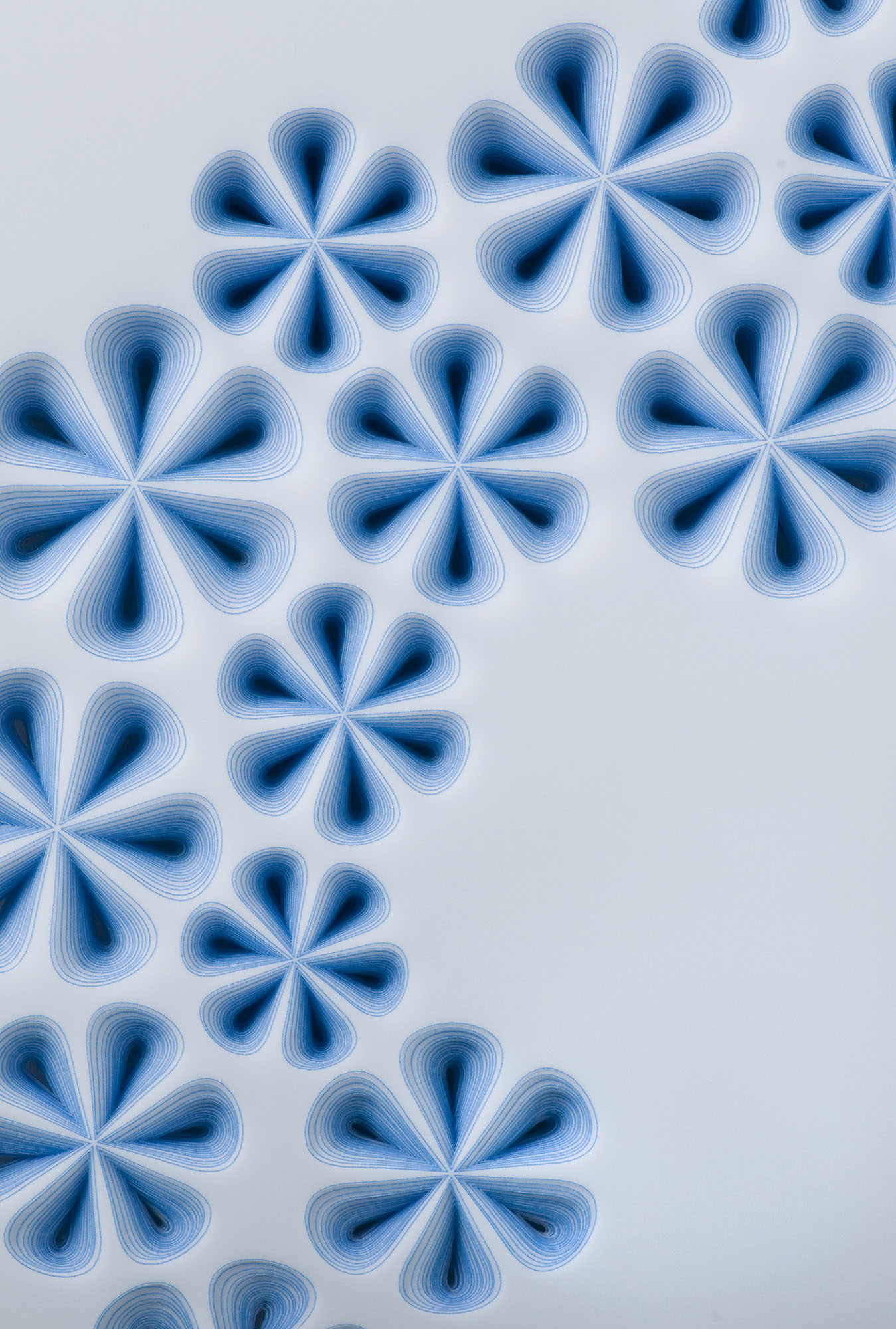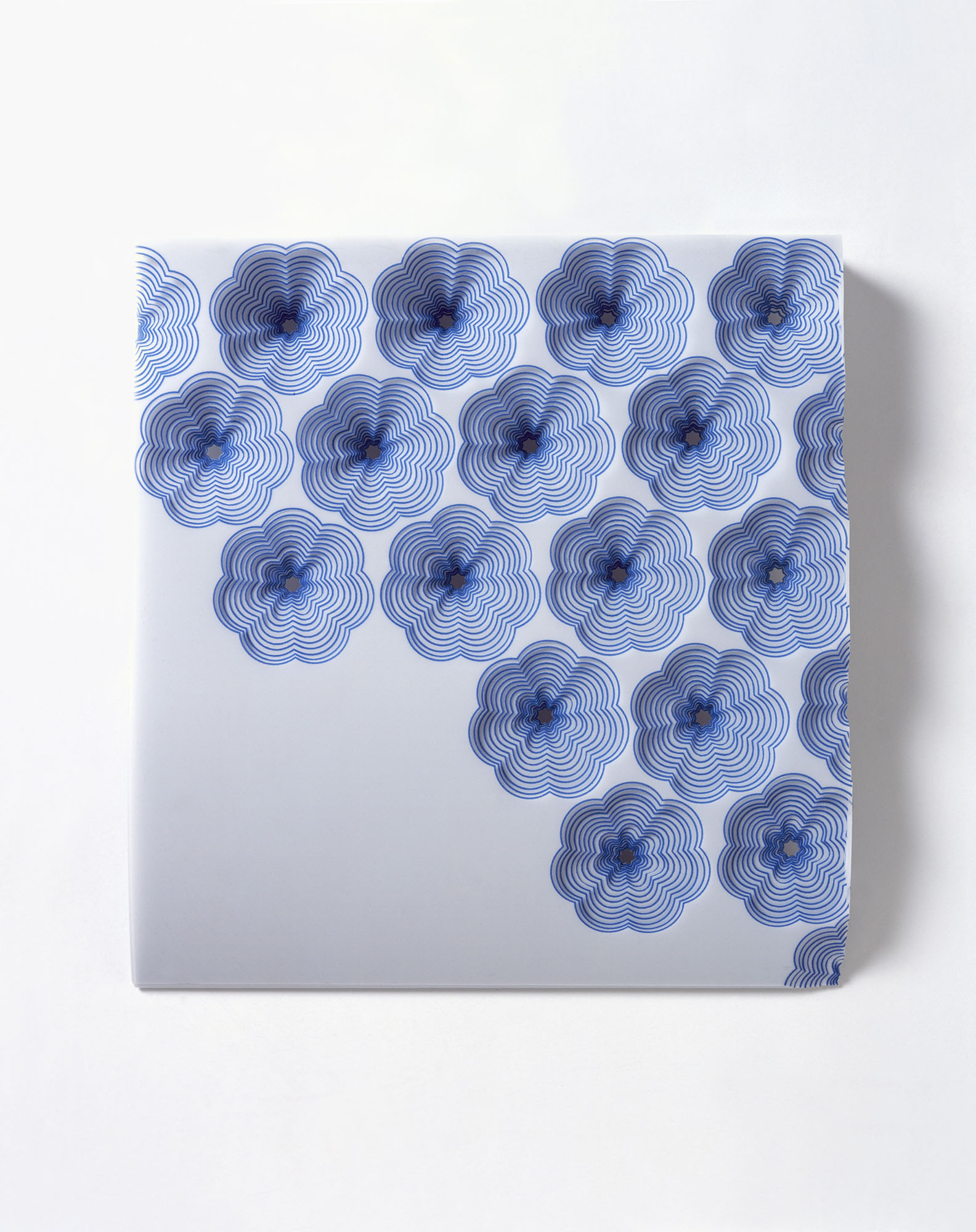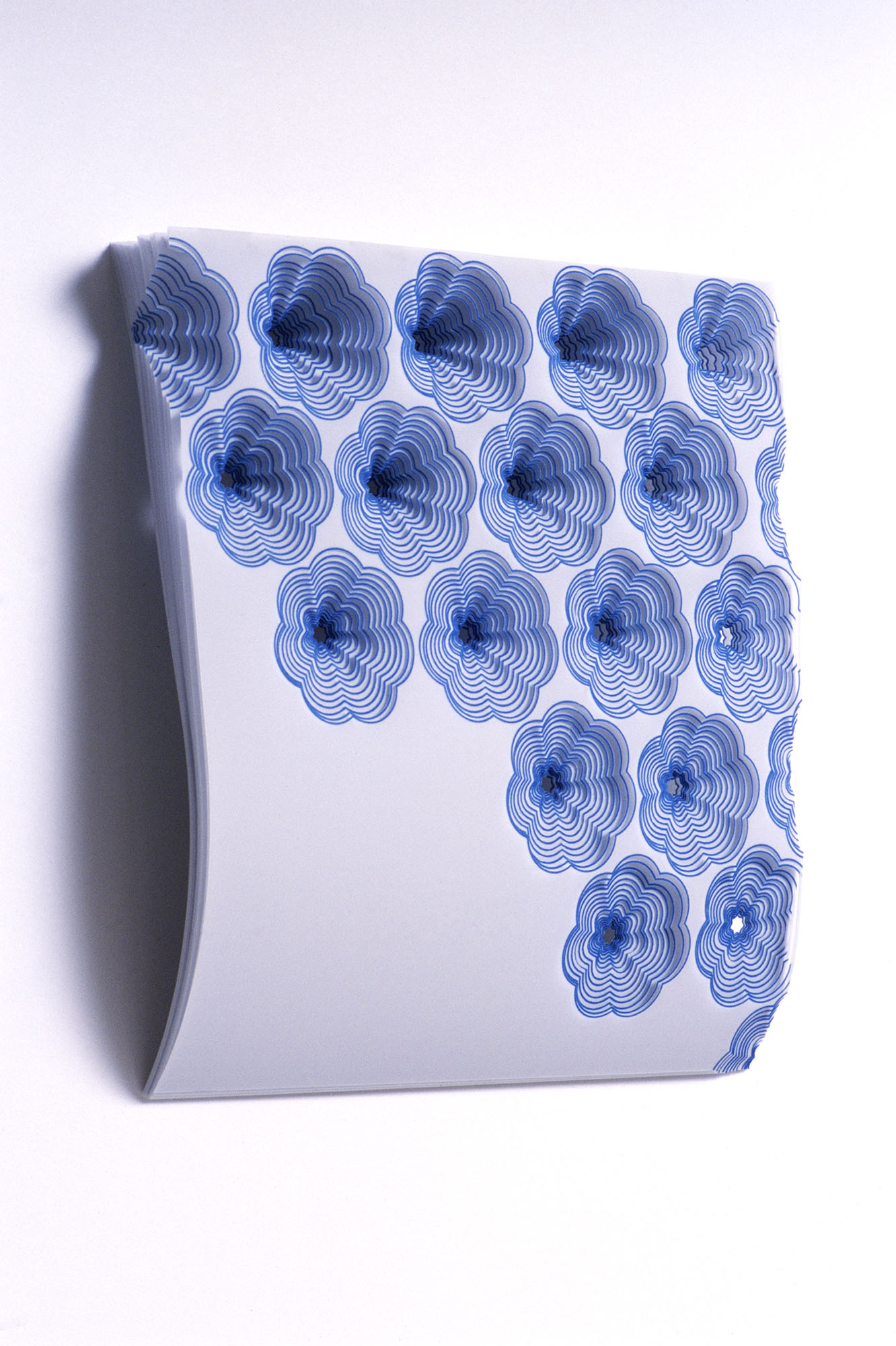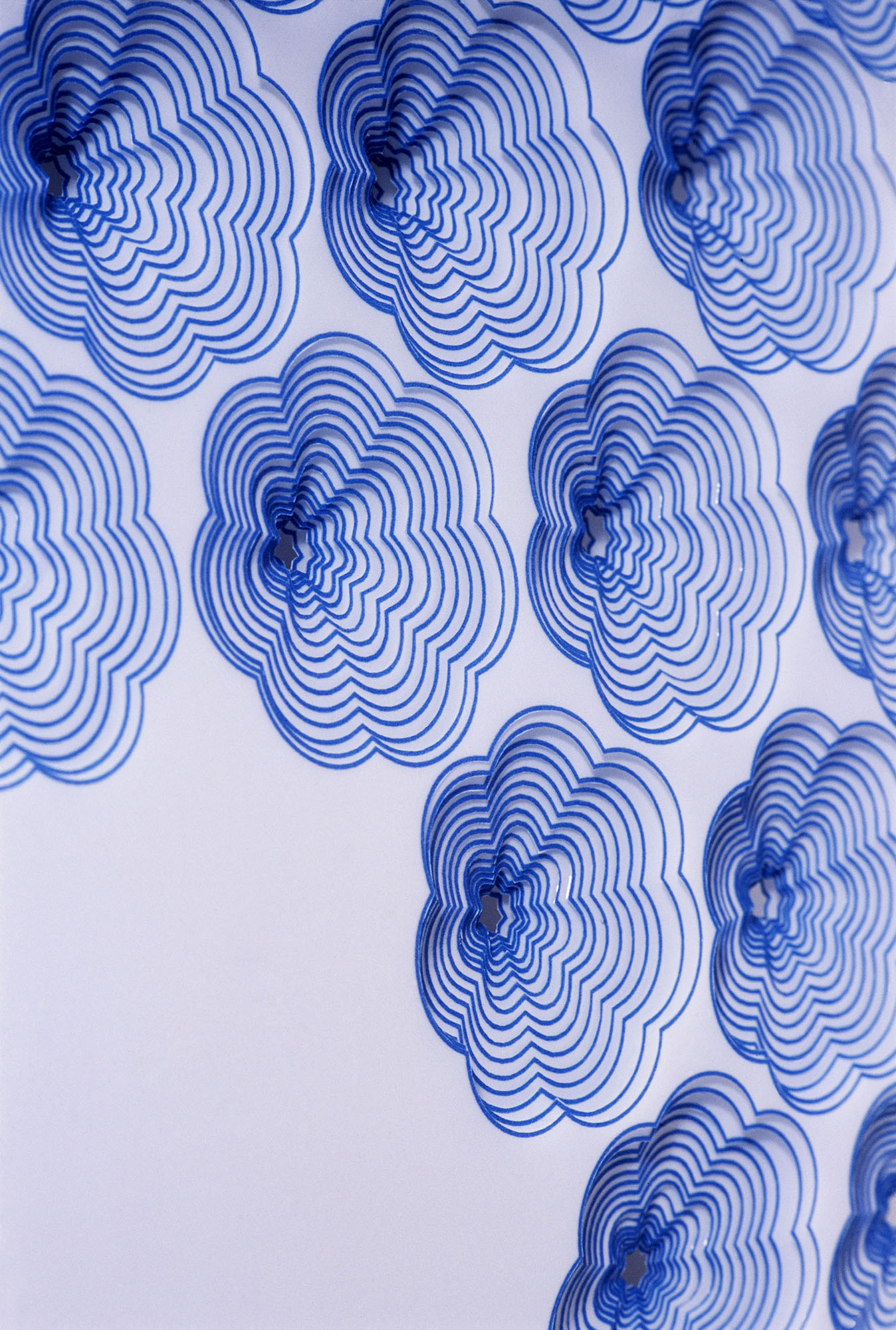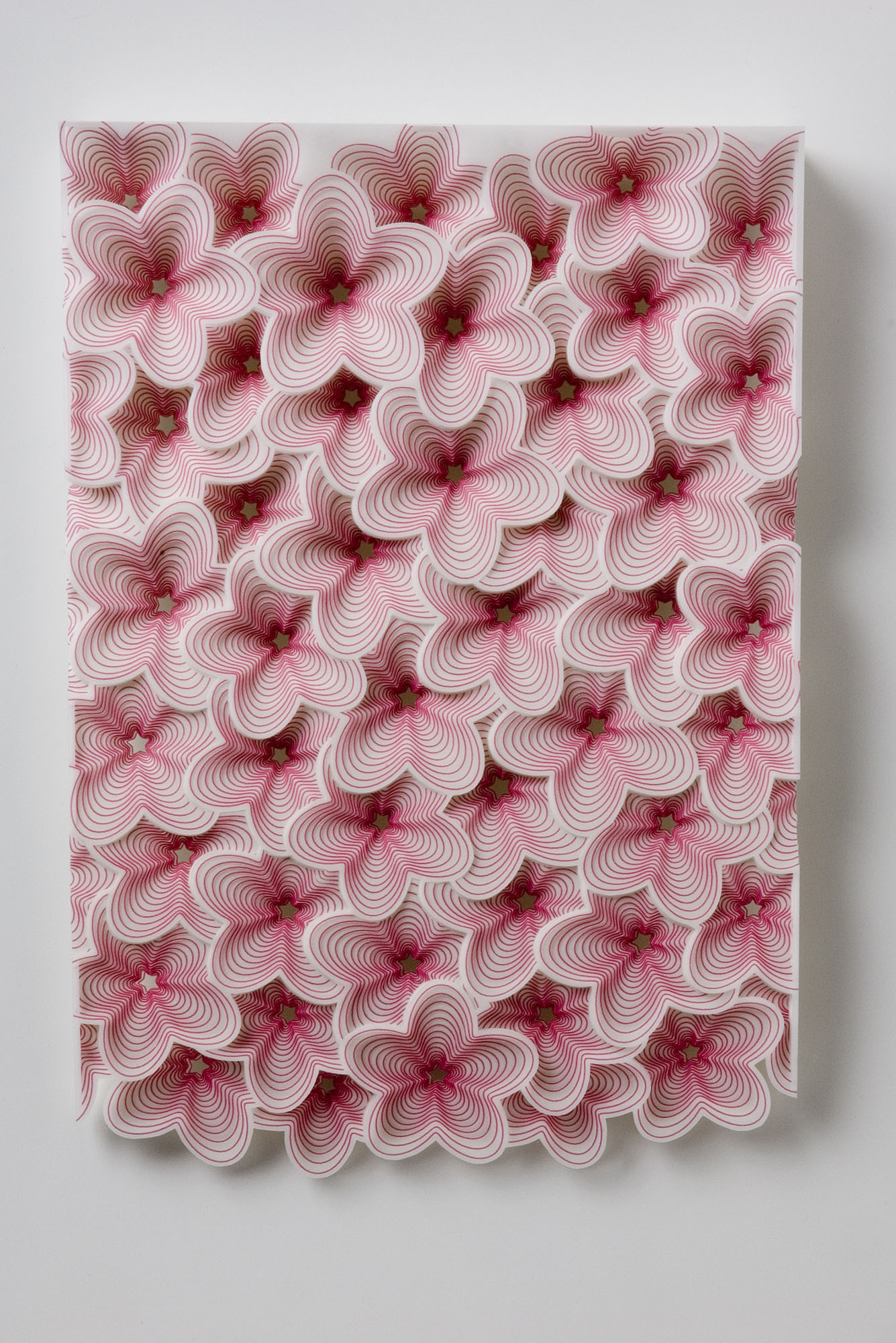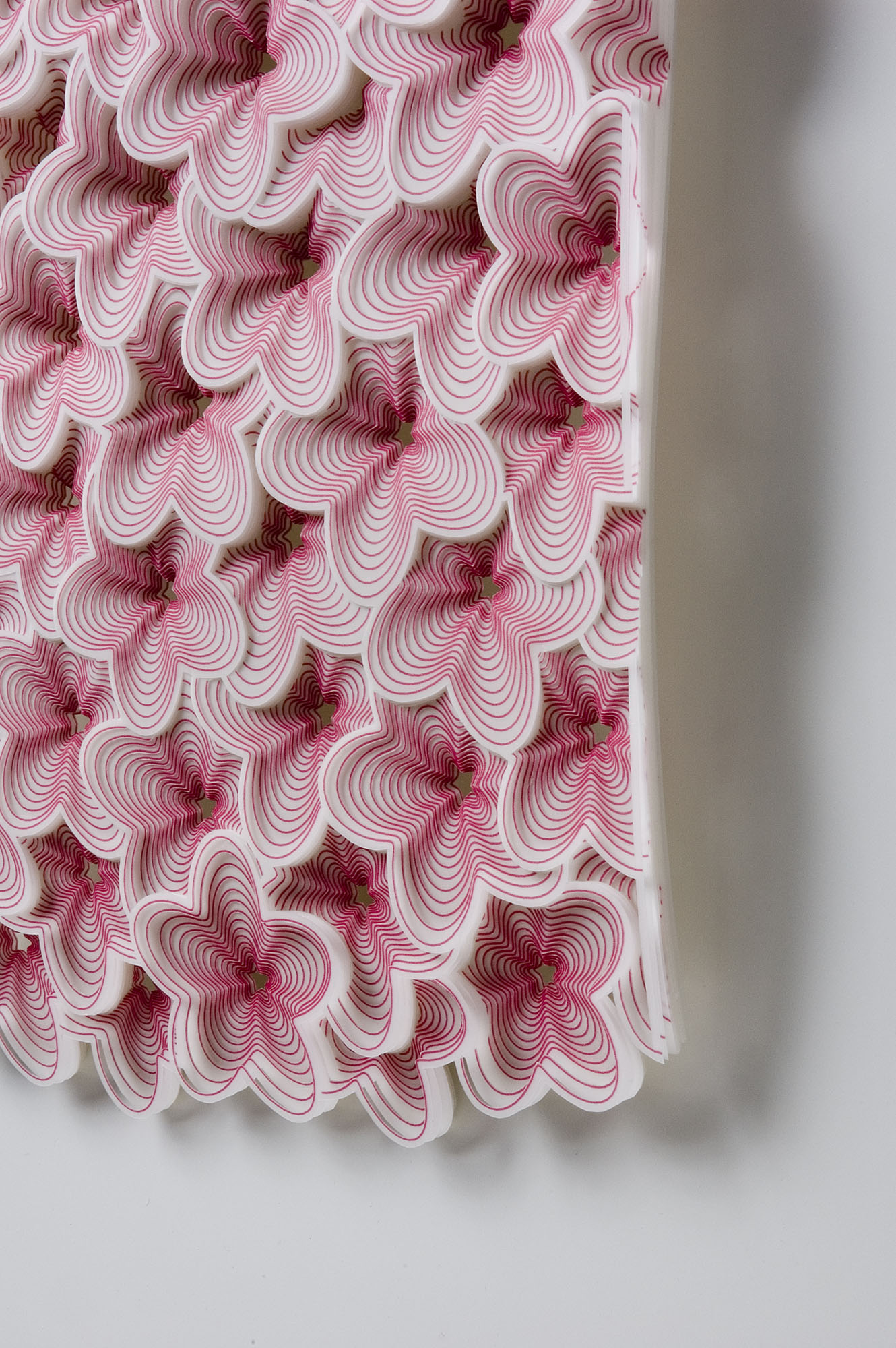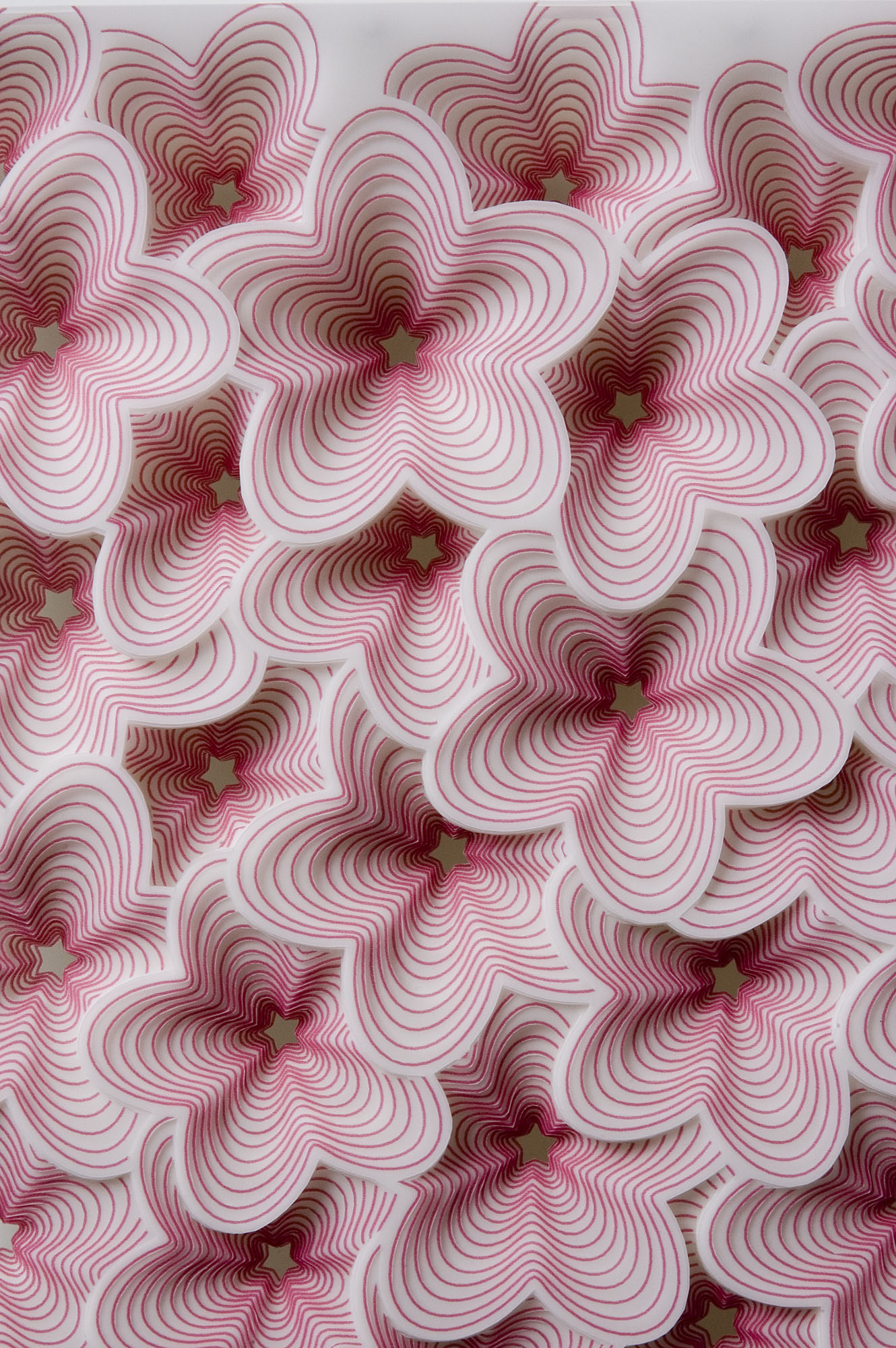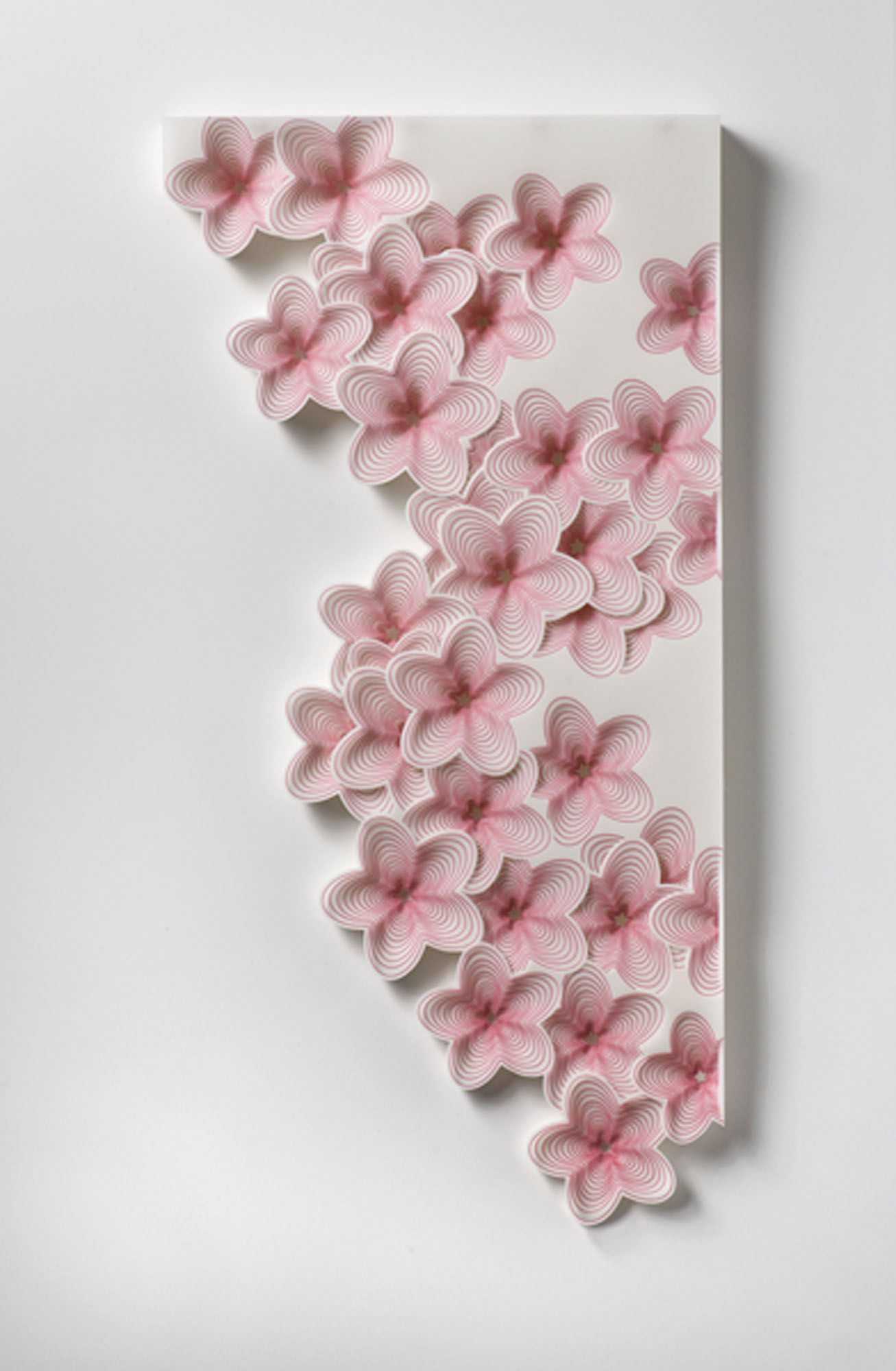Imi Hwangbo transfixes and is transfixed by detail. In this group of remarkable drawings on hand-cut mylar, the artist begins with a visual unit and multiplies it, using repetition as a method and, beyond that, a kind of wondrous madness. Through sheer accumulation—and a nod to other cultures, to modernism, post-feminist ideologies and recent strategies of hybridization—these units become more than the sum of their parts, the quantitative translated into the psychological, the phenomenal into the immanent, cool objectivity into stubborn, passionate conviction. Hwangbo’s obsessively controlled and calculated practice reflects aspects of her generation’s artmaking, at ease with technology, instantaneity and constant change yet seeking their opposite in the hand-crafted, the slowed down, the essential. Hwangbo’s incremental, extravagantly refined, labor-intensive production is a canny reformulation of what drawing can be today.
Hwangbo’s work is geared toward an impossible attempt to achieve perfection. Derived from meticulously calibrated optical effects, Hwangbo’s works are more actually reliefs, measured, however, in millimeters, and extremely delicate in appearance. Traversed by light, their physicality suspended, they seem at times like drawings traced in the mind. Made out of 2 to 20, 30 or more sheets of translucent mylar tinted by archival ink, each element of her construct is hand-drawn, scanned into a computer, printed, then carefully cut by hand and layered so that the edges appear as fine, precisely rendered, colored lines, the final three-dimensional image created out of a stack of graduated mylar sections. One of her sources for her reds and blues is pojagi—the beautifully patterned large, square cloths Koreans traditionally used for wrapping, carrying or covering objects. Hwangbo’s geometric motifs and lacy botanicals are also related to pojagi designs, filtered through a modernist syntax of diamonds, circles, and squares configured as infinitely expandable systems in which solids and voids are similarly important and mind and dream intertwine.
My current work is a series of constructed, three-dimensional drawings. These drawings are made with translucent mylar that is printed, hand-cut, and layered in such quantity that sculptural forms are created. This series of work is based on the decorative patterns and imagery from Korean wrappings cloths, called pojagi. These four-cornered cloths, which are used for wrapping, carrying, or covering objects, are often decorated with geometric patterns and floral motifs.
The significant patterns and color schemes of pojagi cloths recall a tradition of folk beliefs in a living and powerful landscape. The iconography features flowers, animals, and aspects of the natural landscape that are associated with protection from harm and desires for wealth, longevity, and fertility.
My working method begins with a research period in which I study decorative patterns and work through a series of drawings and three-dimensional models. At this stage, I experiment with methods to create interplay between pictorial image and spatial volume. The medium of paper is approached as both picture plane and sculptural material. Light is used a medium to convey the image, with patterns gaining depth through the translucent layering of light and shadow.
From this experimental period, I select drawings to develop into full-scale pieces. These drawings are scanned, printed on a large format printer, and then carefully cut out by hand. The process combines the control and perfection of digitally printed mark-making with the expressiveness and variability of hand-drawn imagery. During the installation process, the pieces, which are composed of up to thirty layers, are aligned to create patterns of form, shape, and depth.
Though technology is utilized throughout my process, drawing by hand is essential to my work. Each piece begins with the intuitive, kinesthetic act of making marks on paper. The scale of the hand and the gestures that are natural to the hand are an integral part of the work. The pieces are designed for scale in relation to my body and the architecture of my studio. In many ways, I consider my works as metaphors for the human body in architecture – windows as apertures or eyes, the human figure as a portal that can be entered or moved through. My process of drawing incorporates aspects of installation art in its dialogue with architecture.
